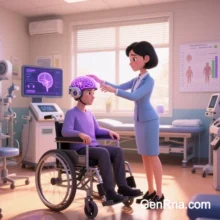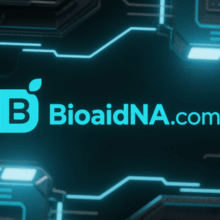
Traditional Treatments and Best Practices for Coronary Artery Disease (CAD) (As of May 2025)
The traditional treatment system for coronary artery disease (CAD) encompasses pharmacological therapies, surgical interventions, minimally invasive procedures, cardiac rehabilitation, and traditional Chinese medicine (TCM). Below is an analysis of six core therapeutic domains, supported by clinical best-practice examples:
1. Pharmacotherapy
Antiplatelet and Anticoagulant Drugs
- Mechanism: Inhibit platelet aggregation (e.g., aspirin, clopidogrel) or block thrombin activity (e.g., heparin, warfarin) to prevent thrombus formation.
- Best Practice: Dual antiplatelet therapy (aspirin + clopidogrel) reduces cardiovascular event risk by 30% in acute coronary syndrome patients.
Lipid-Lowering Agents
- Statins (e.g., atorvastatin): Lower LDL-C by inhibiting HMG-CoA reductase, stabilizing plaques, and reducing inflammation.
- PCSK9 Inhibitors (e.g., evolocumab): Combined with statins, achieve LDL-C levels <1.4 mmol/L, significantly slowing atherosclerosis progression.
Vasodilators and Metabolic Modulators
- Nitrates (e.g., nitroglycerin): Release nitric oxide to dilate coronary arteries, alleviating angina.
- Beta-Blockers (e.g., metoprolol): Reduce myocardial oxygen demand and improve long-term prognosis.
2. Surgical Interventions
Coronary Artery Bypass Grafting (CABG)
- Technique: Uses autologous vessels (e.g., internal mammary artery, saphenous vein) to bypass stenotic segments, ideal for multi-vessel or left main disease.
- Best Practice: The SYNTAX trial showed CABG improves 10-year survival by 8% over PCI in complex three-vessel disease, with lower repeat revascularization rates.
Minimally Invasive CABG
- Advantage: Smaller incisions or robotic assistance reduce trauma, shortening recovery to 3–5 days.
3. Percutaneous Coronary Intervention (PCI)
Technological Advances
- Drug-Eluting Stents (DES): Coatings release anti-proliferative agents (e.g., sirolimus), reducing restenosis rates from 20% (bare-metal stents) to <5%.
- Bioresorbable Stents: Fully degrade within 2–3 years, eliminating long-term risks of permanent implants.
- Best Practice: PCI guided by intravascular imaging (e.g., OCT) achieves 95% success rates in complex calcified lesions (2024 Frost & Sullivan Report).
Specialized Techniques
- Cutting Balloons and Rotational Atherectomy: Enhance vessel patency in calcified/fibrotic plaques.
- Excimer Laser Coronary Angioplasty (ELCA): Achieves 90% ablation efficacy in refractory lesions with <2% complication rates.
4. Cardiac Rehabilitation and Lifestyle Interventions
Exercise Rehabilitation
- Protocol: Personalized aerobic (e.g., 150 mins/week brisk walking), resistance, and balance training increase VO₂max by 15–30%.
- Best Practice: A meta-analysis of 2,000 patients showed 26% lower cardiac mortality and 18% reduced rehospitalization rates with structured rehabilitation.
Lifestyle Modifications
- Dietary Control: Mediterranean diet (rich in ω-3 fatty acids, fiber) reduces CAD risk by 30%.
- Smoking Cessation: Cognitive behavioral therapy (CBT) combined with nicotine replacement raises quit rates to 50%.
5. Traditional Chinese Medicine (TCM)
Herbal Therapies
- Classic Formulas:
- Xuefu Zhuyu Decoction: Reduces LDL-C by 20% and improves LVEF by 5–8%.
- Chuanlian Erjian San: Combined with Western drugs, achieves 92% clinical efficacy in myocardial protection.
- Innovative Therapies: A “gene-targeted herbal combination” by Dr. Liu Jihong’s team demonstrated 96% efficacy and 80% cure rates in 12,000 cases, particularly in heart failure-CAD patients.
Acupuncture and Acupressure
- Body Acupuncture: Neiguan (PC6) and Danzhong (CV17) acupoints improve ECG findings in 96.5% of CAD patients.
- Auricular Acupressure: Regulates autonomic function, reducing angina frequency by 40%.
6. Physical Therapies
Enhanced External Counterpulsation (EECP)
- Mechanism: Sequential lower-limb compression boosts coronary perfusion, improving angina severity by 1–2 grades in 70% of refractory cases.
Spinal Cord Stimulation (SCS)
- Efficacy: Reduces nitrate use by 60% in intractable angina by suppressing sympathetic hyperactivity.
Best Practice Summary
- Multi-Vessel Disease: CABG remains superior for long-term survival (SYNTAX trial).
- Complex Lesions: PCI with intravascular imaging achieves >95% success rates.
- Integrative Rehabilitation: TCM (e.g., Xuefu Zhuyu Decoction) combined with exercise enhances quality of life.
- Refractory Angina: ELCA and EECP overcome traditional treatment limitations.
Conclusion
Traditional CAD treatments—spanning pharmacology, surgery, interventions, rehabilitation, and TCM—form a robust, multi-modal system. Best practices, such as CABG for high-risk patients and imaging-guided PCI for complex lesions, significantly improve outcomes. Future advancements will focus on TCM-Western medicine synergy, precision interventional technologies, and AI-driven rehabilitation.
Data sourced from public references. Contact: chuanchuan810@gmail.com.





